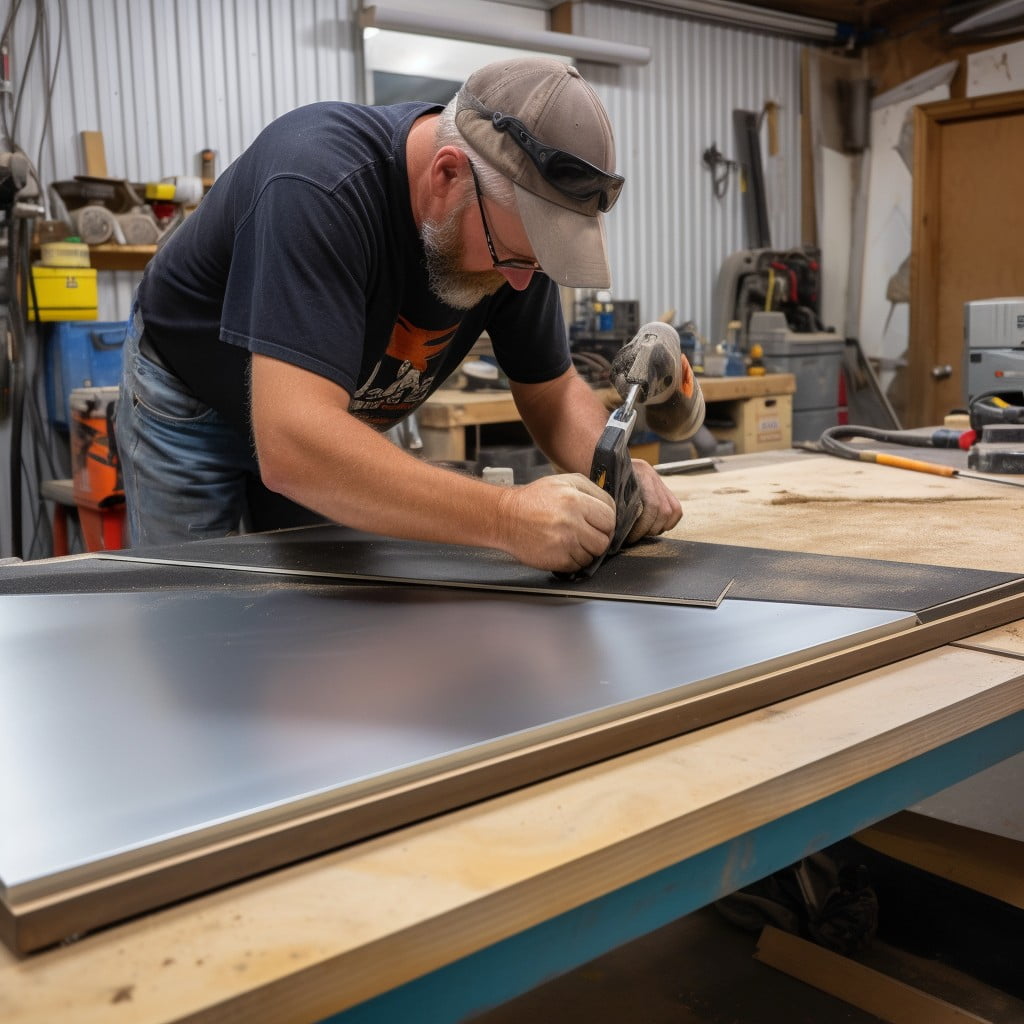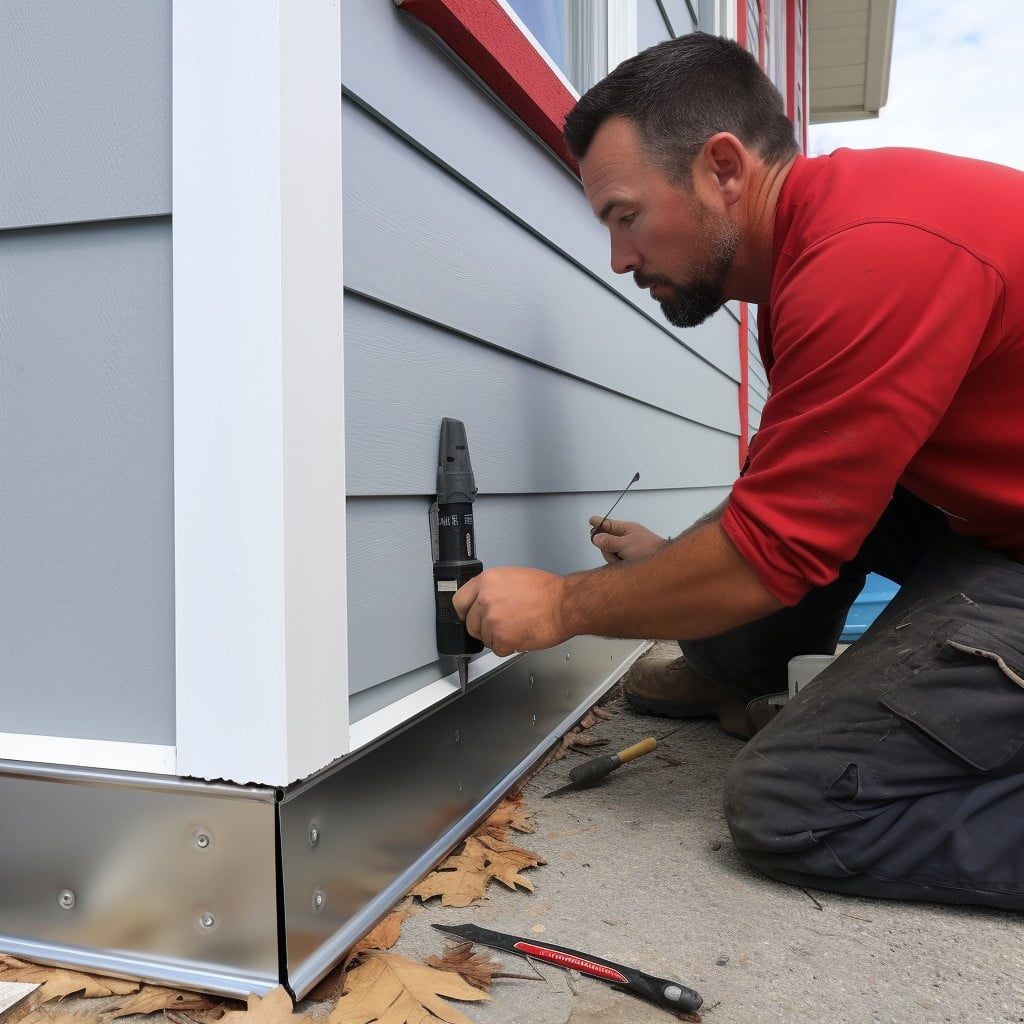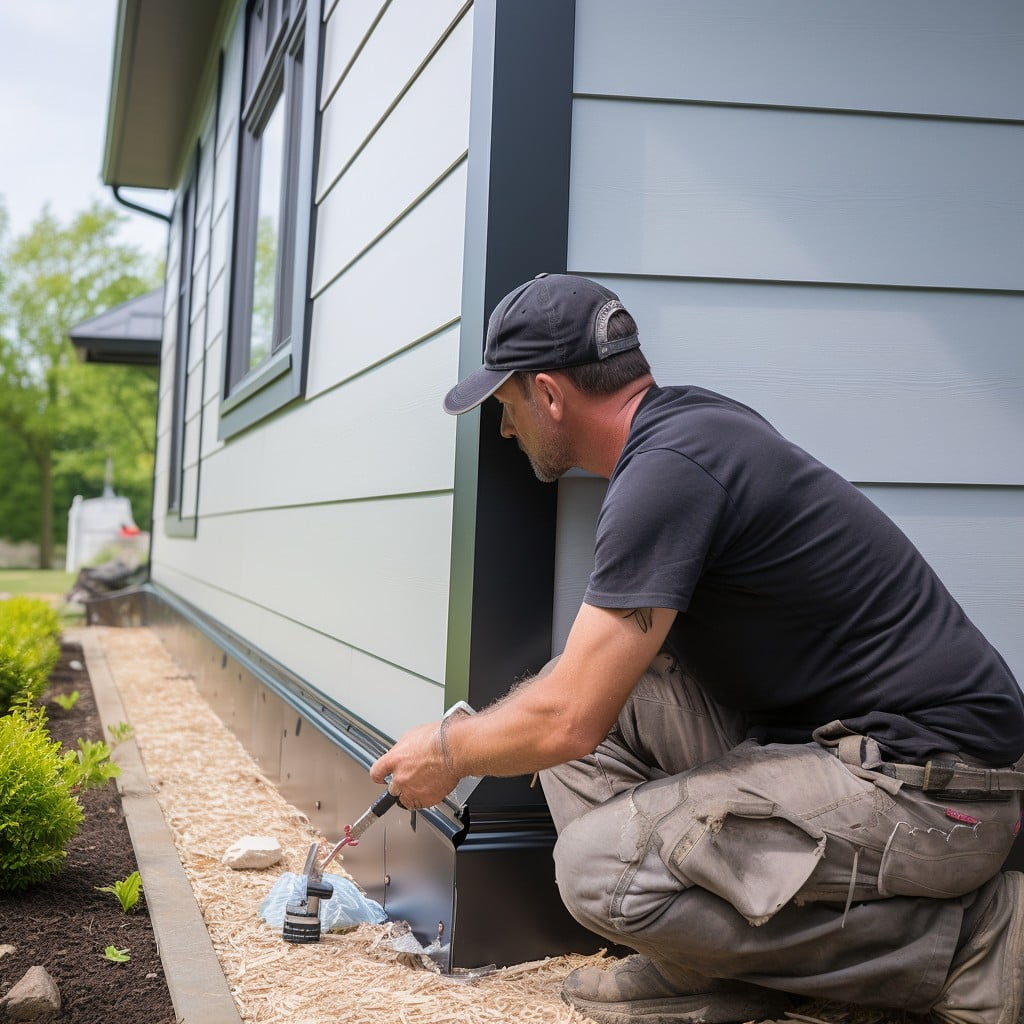Discover the step-by-step process of installing base trim on a metal building to enhance its aesthetic appeal and boost structural integrity.
Installing base trim on a metal building is a critical step in the construction process, providing both an aesthetic finish and a barrier against pests and weather. The process involves a few key steps: measuring and cutting the trim, aligning it correctly, and fastening it securely. This article will guide you through each of these steps in detail, ensuring you achieve a professional finish.
Whether you’re a seasoned builder or a DIY enthusiast, the following sections will provide you with the necessary insights to install base trim on your metal building efficiently and effectively.
Key takeaways:
- Clean the base area before installing trim.
- Take accurate measurements and gather necessary tools and materials.
- Cut and finish the base trim for inside and outside corners.
- Overlap base trim for a seamless look and added durability.
- Properly align and fasten the trim using appropriate hardware.
Preparation Steps for Installing Base Trim On Metal Building

To ensure smooth application, it’s crucial to start off with proper groundwork. First, meticulously clean the base area where the trim will be installed to rid it of any debris or dirt. This prevents the potential for rust or other corrosive elements from damaging the trim in the future.
Next, gather the necessary tools and materials, including the chosen metal base trim, measuring tape, metal shears and self-drilling screws. Ensure that your metal base trim is of appropriate size and style for your building. Accurate measurements of the area are key for a precise fit and professional finish.
Lastly, take safety precautions to minimize the risk of accidents during the installation process. Use safety glasses and gloves to protect against flying debris and metal shards. Now with the preparation complete, you’re equipped to advance to the following steps of installing the base trim in a correct and secure manner.
Cutting and Finishing Base Trim At Outside Corners

To accurately cut your base trim at outside corners, follow these steps:
- Measure the distance from the edge of your corner to the first seam of your metal siding.
- Subtract an 1/8 inch from your measurement for thermal expansion.
Next, process the finishing of base trims:
- Form a 90-degree corner by creasing the base trim. Arc-bend the base trim for a rounded corner.
- Nesting is crucial for a natural look, place the longer trim pieces on top of the shorter ones.
Remember, accuracy in measurement and precision in cuts are the cornerstones of a polished finish. You are striving for a flush fit – any visible gaps can be sealed with color-matched sealant. Be patient, the aesthetical appeal and longevity of your building depends on this meticulous process.
Cutting and Finishing Base Trim At Inside Corners

Initially, gather your tools: a measuring tape, a metal trim cutting tool, a straight edge, a safety ruler, and protective work gloves.
Begin by taking precise measurements of the internal corner where the base trim will be installed.
Subtract an additional 1/8 inch from your measurement; this is to account for thermal expansion which allows the trim to flex without causing damage.
Prioritize cutting your base trim with an angle to match the corner.
A 45-degree slanted cut will complement an inside corner most effectively, each piece meeting in an almost seamless line.
Utilize a straight edge along your marking for an accurate and clean cut.
After cutting, gently file the trim edge to smoothen any burrs or rough patches.
This simple step not only achieves a neat finish but also prevents any future injuries from sharp edges.
Lastly, take note of the cut end’s position; it ought to be facing inwards to camouflage the cut area, thus, enhancing the finished look.
How to Overlap Base Trim for Metal Siding Panels

For a seamless look and added longevity, overlapping your base trim is vital. Here’s how to achieve a professional finish:
Begin by laying your first piece of base trim where you wish to start, ensuring all edges align cleanly with the metal siding panels. Rookie mistake: Starting right at a doorway or corner. This will only complicate your panels’ alignment. Instead, initiate your installation mid-wall.
When you butt the next piece of trim against the first one, do so at a slight angle. Cut the upcoming piece long enough, so it doesn’t just butt against the first, but overlaps it. Aim for about one inch of overlap. This essentially interlocks the pieces, eliminating gaps that could admit water or pests and ramp up your trim’s durability and cleanliness.
Fasten both pieces to the metal panels to secure the overlap. Keep weather factors in mind. Overlaps should face away from prevailing winds, so water doesn’t penetrate your building.
Keep applying these principles around your building and remember: Patience is crucial to achieve a lustrous, professional finish.
Fastening Metal Siding Base Trim Securely
In this process, aligning the trim properly is of the utmost importance. Start by positioning the base trim under the metal panel, ensuring it’s flush against the metal wall. Then, mark screw placement approximately every 24 inches along the length of the trim piece. Drill pilot holes before fastening screws to avoid denting or distorting the trim.
When fastening, always use appropriate hardware for metal buildings; self-tapping screws are often the best choice. Ensuring the screws are fastened tightly, but not too tight to to prevent stripping or warping. It’s critical to finding a balance when tightening screws – they should be secure, but not overly forced.
Weather conditions can test the integrity of your installation. Therefore, always consider using additional sealants or weatherproofing measures to ensure maximum durability and protection against the elements. Silicon caulk is commonly recommended for watertight seals.
Remember, safety should never be compromised. Wearing gloves and safety glasses can protect you from sharp metal edges and flying debris during the installation process.
Finally, routinely check the fastened base trim to address any necessary repairs or replacements promptly. Regular maintenance is the key to prolonging the life of your base trim and the overall look and integrity of your metal building.
Handling and Fastening Trim in Metal-Frame Buildings
When it comes to effective trim handling and fastening, certain key steps are crucial.
Firstly, avoid bending the trim pieces during transportation and unloading. The trim should retain its original form for proper fitting.
Secondly, use the correct fastener types. Self-drilling screw fasteners are common, but the choice depends on your specific trim and building design.
Thirdly, ensure the trim is aligned properly before fastening. An improper alignment adversely affects both aesthetics and function.
Finally, confirm the snug attachment of the trim to the structure. A loosely fastened trim won’t create the desired seal around the base and can lead to leaks and drafts.
So, it’s not just about the fastening but also the careful handling of trim materials and precise fitting that contribute to a successful base trim installation in a metal-framed building.
Maintenance Tips for Metal Building Base Trim
Proper care extends the life and function of your base trim, preserving the overall aesthetics and strength of your metal building.
1. Regular inspection is paramount. Semi-annual checks can help spot early signs of rust, scratches, or other types of physical damage.
2. Timely repairs should not be overlooked. If you spot any small dent or scratch, it’s essential to immediately clean, prime, and paint the affected area to prevent corrosion.
3. The effectiveness of cleaning shouldn’t be underestimated. Dirt and grime buildup can be damaging over time. Use a mild detergent and soft brush to clear off any accumulation.
4. Water drainage is a crucial factor in the lifespan of your base trim. Ensure the building’s surrounding area allows quick water runoff, preventing standing water around the foundation.
5. When considering repainting, always utilize non-corrosive paint designed explicitly for metal surfaces to minimize potential for rust occurrence.
Through this maintenance regimen, you can ensure your metal building’s base trim remains in optimal condition, contributing to the longevity and resilience of your structure.
FAQ
What is base trim on a metal building?
Base trim on a metal building is a type of base framing which uses a specific shape and detents to create a pocket for fastener clearance and provide support to the base of the wall panel, depending on the wall panel type and base condition.
What do you put on the bottom of metal siding?
The bottom of metal siding necessitates an underlayment, preferably breathable synthetic material, to safeguard against weather conditions and to establish a secure seal.
What are the key steps in installing base trim on a metal building?
The key steps in installing base trim on a metal building are starting at a corner, aligning the trim with the base angle, drilling pilot holes, attaching the trim using screws, and sealing the seams for weatherproofing.
What materials are recommended for use as a base trim on a metal building?
For a durable and reliable base trim on a metal building, materials like galvanized steel or aluminum are often recommended.
Are there specific tools required for installing base trim on a metal building?
Yes, for installing base trim on a metal building one needs tools like tape measure, metal snips, drill, screwdriver, leveling tool and fasteners.
Recap




